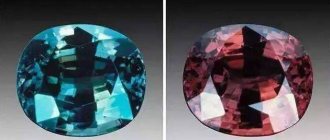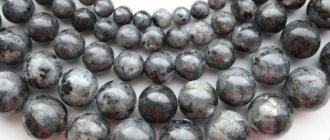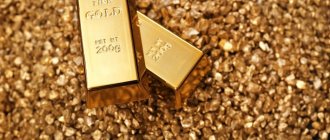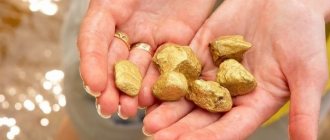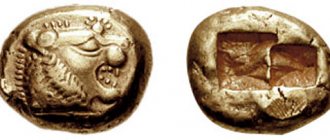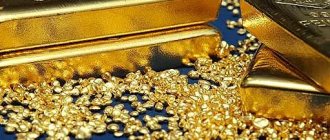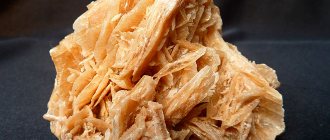The presence of sufficient mineral reserves is a guarantee of successful development of industry and economy. The prosperity of the region depends on deposits of mineral salts, oil, natural gas, diamonds, metals and coal. The well-being of the Perm region is directly related to the pace of mining. There are more than 500 names in the region.
Dolomites, gypsum, lime, marble, anhydrite, marl, and chrome ores are represented. As well as mineral pigments, sand, expanded clay, clay, strontium. Minerals of the Perm region, which are of paramount importance for the region:
- salt;
- oil.
In addition to them, the lands are abundant in a number of other sought-after minerals, chemical elements and metals:
- iron ore;
- coal;
- peat;
- diamonds;
- gold;
- volkonskoite;
- rubidium;
- bromine;
- iodine:
- strontium;
- platinum;
- anhydrite;
- limestones;
- gypsum;
- uvarovite.
The extraction of black gold in the Volga region began relatively recently, about a hundred years ago. The drilling of the first wells took place under the leadership of the scientist and geologist Pavel Ivanovich Preobrazhensky. The work was carried out several kilometers from the border of the rural settlement of Verkhnechusovskie Gorodki. In 1929, the first oil was obtained from the well.
A little later, minerals in the Perm region were discovered in the area of the settlements of Kueda, Dobryanka, Krasnokamsk and Polazny. The largest oil deposits are located near Chernushki and Os. Some deposits are still subject to development.
Black gold
The local oil has a rich charcoal color. It is viscous and thick. It lies at great depths. Therefore, the extraction of such a valuable mineral in the Perm region is associated with colossal financial investments. Geologists believe that black gold deposits appeared in these places during the Devonian period.
Advantages of Volga oil:
- excellent chemical properties;
- high quality;
- its processed products can be used in the aviation industry.
To date, exploration work has been completed at 200 fields in the region. Oil and gas production is underway.
Mineral salts
Residents of the region began to receive their first salt hundreds of years ago. Scientists and historians are still guessing about the exact date of the beginning of mining in the Perm region. The name of the person who came up with the idea of boiling the salt also remains unknown. Only written documents mention certain merchants Kalinnikovs, who specialized in boiling salt.
Their craft was adopted by the Stroganovs, who managed to oust products from Balashikha and Vychegda from the Russian salt market. The region produces not only table salt, but also potassium salt. According to information from a textbook on the environment for 4th grade, minerals in the Perm region are concentrated in the Verkhnekamsk and Krasnovishersky districts. The lands near the settlements of Bereznyaki and Solikamsk are abundant in potassium salts.
Local chemical industry enterprises specialize in their processing and production of mineral fertilizers. They produce industrial and edible salt. They supply raw materials for the titanium-magnesium plant.
History of gold mining on Vishera in tsarist times (1842–1917)
In 1842, Chekletsov discovered rich placers along the river.
Wells. Exploration was carried out in the 1850s, and commercial gold mining began in the 1860s. The first mines were allocated along the river. Burtynka, the left tributary of the river. Big Help. These mines were developed, sold, credited to the treasury and again allocated in the same place for new minor work. Mining engineer Mamontov visited the mines in 1911 and left the following descriptions: “Elizavetinsky mine” by Ivan Vasilyevich Prudkov is located along the Nikolsky key, the right bank of the river. Melted, above the Martan stone. The mine was opened by N.P. Zuev, explored and began working in 1905. In 1910, the mine was leased to I.V. Prudkov. The gold content turned out to be from 7 to 20 gold. cubed. The richest gold was at the bottom of the placer, on destroyed quartzites. "Nikolaevsky" mine V.Ya. Sibirov along the river Lost, the right tributary of the river. Melted. The deposit was discovered in 1903 by A.I. Kazimov. The lower part of the “Nikolaevsky” mine is allocated under the name “Aleksandrovsky”. In 1911, up to 200 people worked at the Alexandrovsky mine. Up to 25 cubic meters of sand were washed at 2 American locks per shift. "Spassky" mine G.E. Navalikhina is located 8 versts from the mouth of the river. B Martaika. The mine is leased from S. Rogalev. Employs 70 people. in 2 shifts and washes 5 cubic meters on the American lock with a deck 3 fathoms long and 12 inches wide.”
The discovery of gold along the Vels River gave impetus to exploration in the Cherdyn district in 1844. Burnashev's expedition of 46 people dug 316 pits with a length of 2900 miles on 62 rivers (Unya, Elma, Porozhnaya, Vyderya, Kolennaya, Chistaya, Mysolak, Olenya, Krysya, Kedrovy Log, etc.). The river was of greatest interest. Velasnitsa, where the gold-bearing layer was distinguished by thickness and width with a uniform gold content of 24 shares per 100 poods. By 1918, however, production had not begun, despite the fact that in 1861 the Kalashnikovsky site was allocated, which was subsequently renamed the Pechersky Gold Mine. Work on it did not take long. Nuggets weighing up to 2.5 pounds have been recovered. However, the flight of the trustee with the gold stopped the work. The mine section was then jealously exploited by trans-Ural and local predators.
In 1912, the “Alexandrovsky mine” along the river was allocated. Vyderya-Mikhailovsky, but work never started.
On the river In Samenka, official gold mining began in 1860, but the work of predatory prospectors had taken place even earlier. By 1918, on Samenka there were mines “Videnyevsky”, “Nadezhny”, “Spassky” and “Dmitrievsky”; on the Amalevsky Key - “Elizavetinsky”; on the Assumption Key - “Uspensky” and “Justice”. The gold content was up to 25 spools per cube. All the “light” parts of the placers were depleted. Miners and predators, digging into the sides of the quarries, dumped the dumps into the old quarries. Along the river In Bolshoi Surya in 1918 there were the following gold mines: Prokopyevsky, Aleksandrovsky, Uralsky, Ivanovsky, Pavlovsky, Vasilievsky and Solikamsky. Aleksandrovsky and Uralsky were also adjacent to the Evropeysky, Rozhdestvensky, Blagodatny, Ivano-Ignatievsky and Petro-Pavlovsky mines. At Rozhdestvensky there were attempts to work in mines up to 4 fathoms deep, but the result is unknown. The entire vein has been worked out at Uralskiy; gold was up to 30 gold. per cubic meter
The average gold content was 15 gold. per cubic meter Prospectors were strongly attracted by nuggets; specimens weighing up to 94 pounds were found.
Gold mined by prospectors and predators fell into the hands of buyers and was not officially registered.
In the 1880s, mining engineer, doctor of mineralogy and geognosy Pyotr Ivanovich Krotov visited Vishera. In 1888, in the book “Geological Research on the Western Slope of the Solikamsk and Cherdyn Urals,” he provided the following information: almost the entire Samenka valley was mined for gold, work was concentrated above the Uspensky mine, in the upper reaches of Samenka. The gold-bearing sand consisted exclusively of mica schists. The gold is generally small, but there are large nuggets. The gold-bearing layer was buried under layers of clay and peat. In the 1880s, gold mining operations were active in the area of the Uspensky Spring, where gold-bearing sand lay superficially. At the top of Samenka and along the gentle ravines flowing into it, large gold and nuggets predominated.
Prof. A.A. Shtukenberg made a special report on the Vishera gold at the Mineralogical Society on March 5, 1902. According to him, on the right bank of the Vishera near the confluence of the Chuval, thin-layered black limestone was discovered, penetrated by thin veins of quartz, in which inclusions of gold in the form of flakes and leaves, sometimes visible, were found with the naked eye. In addition to quartz veins and streaks, there are many quartz lenses in the limestone mass. The gold content in quartz was 4–6 gold. per 100 poods, and in general in thin-layer limestone - 1.5 gold. per 100 poods.
Gold miners began to develop the upper reaches of the Vishera in the second half of the 19th century. With its discovery of gold, exploration of which was carried out in 1874 in the area of the river. Kutim, owes to the Kutim iron ore deposit, the extraction of which was carried out for the Kutim blast furnace plant. Along with alluvial deposits, at the end of the 19th - beginning of the 20th centuries. on the river Ore gold was found in Vishera (Nizhne-Chuvalsky mine, quartz veins in the basins of the Samenka, Talaya, Bolshaya Martaika rivers). The largest primary gold deposits on the river. Vishera are Chuvalskoye, discovered in 1898, and Popovskaya Sopka.
In 1900 on the river. Kutim already operated five mines: Spassky, Uralsky, Uspensky, Pravosudny and Aleksandrovsky. In addition, there were two gold mines on the river. Uls in the village Zolotanka. Before the revolution of 1917, most of the Kama gold was mined in the north of the Krasnovishersky region (900 kg per year). On the Uls and Vels rivers, gold nuggets weighing up to 400 g were found in placers.
A special feature of gold mining is the participation of France. Entrepreneurs of this country received concessions for the extraction of many resources. Pig iron was mined in large quantities, which was actively purchased by Western countries in those years. The French also built a smelting plant on the territory of the region, where they processed the mined iron ore and smelted ingots from it, which were transported further along the rivers on barges to large centers.
There was a rumor that foreigners illegally mined Vishera gold and smelted it into cast iron ingots at the Kutimsky plant in order to secretly transport it down the Kama River, and then to Nizhny Novgorod. The scientific background is as follows: smelting cast iron requires the production of a charge in which quartz is used; most likely, gold-bearing vein quartz from the Chuvalsky ridge was used for batching iron ore. Legend says that in the spring, on high water, one of the barges that transported cast iron along the river. Vishera, crashed on a coastal stone, and all the cast iron ingots sank. The French owner personally went to the scene of the accident, was terribly indignant and promised big money to the one who would get it from the bottom, but no one found the barge. They say that to this day people, having found a pig iron, break it in the hope of discovering gold. _____________________________________________________________________________________
Ore
This type of mineral in the Perm region is mined a few kilometers from the village of Sarany. It is the only one in the entire region. In the Volga region, the products of local ore mining enterprises are highly valued.
Iron ores have been mined in these parts for more than two hundred years. Peter I began to develop the local deposits. His geologists carefully explored the foothills of the Urals. They obtained 500,000 pounds of iron. Ores are popular minerals and rocks in the Perm region. Only in the era of Peter the Great, a huge number of guns, cannons, cannonballs and other military supplies were cast from them.
Expansion of resource extraction territory
In addition, valuable types of marble were mined in this area, from which famous sculptors of Europe created their cultural objects.
Each year, teams of prospectors actively moved up the beds of local rivers from the location of the village, penetrating into the most inaccessible places. Thanks to their efforts, new deposits and placers were discovered.
Maps of places with possible deposits of valuable ores and precious stones were compiled. At the same time, deposits of building materials and raw materials were discovered. Until 1900, the region began to be actively explored by geological communities.
Peat and coal
The largest deposit of this mineral is the territory adjacent to the village of Shabunichi. It supplies fuel to about 230 industrial enterprises in the region. Quarrying has been going on for over 70 years. There is also peat in Krasnovishersk, Gainy, Nyrob, Kochevo, and Chastinsky municipal district.
The colossal deposits of peat in these places are a strategic guarantor of the well-being of the fuel industry of the Volga region. The list of minerals mined in the Perm region also includes coal. But its number in the region is small.
Diamonds
The share of mining of precious stones in the subsoil of the region is no more than 0.2%. Their value exceeds 20% of the total valuation of all diamond products obtained on the territory of the Russian Federation. Perm stones are of high quality. Eight out of ten diamonds mined in the Volga region are used in the jewelry industry.
Precious minerals of the Perm region do not have a pronounced shade. They have a high degree of transparency. Their faces are distinguished by smooth, rounded edges. Fifteen years ago, a 35-carat diamond was discovered in the region. The length of its longest side is 20 mm. The size of the other part is 17 mm.
According to information published on the pages of the Perm Regional Server, minerals are mined today in the following areas:
- Krasnovishersky.
- Gornozavodsky.
- Cherdyn.
- Krasnokamsk.
- Alexandrovsk.
Village "Golden Crafts"
A village was created at the site where miners were extracting precious metals from rocks. 1824 is considered the official date for the start of mass mining of placer gold. A year later, almost 2.5 kilograms of the precious metal were mined.
After 6 years, production increased tenfold and amounted to about 44 kilograms. The record year at that time was 1948 - then 350 kilograms of gold were mined, and in parallel, prospectors in the same year extracted almost 250 kilograms of platinum. These were the first major gold mining figures throughout the country.
At the same time, copper mines began to be actively developed. In that century, copper was in great demand. Therefore, all the main efforts were aimed at processing this particular ore. Only prospectors who independently worked on the territory paid attention to the gold mines. Using their own funds, they organize the production and extraction of gold in the area of the village.
The village is known not only as the country's first developed gold placer deposit. The country's first diamonds were also discovered on its territory.
Volkonskoit
The Volga region is the only region in the world whose lands have industrial deposits of this natural material. In addition to Russia, volkonskoite is found on the African continent. This stone is used to produce bright green paint. It does not fade in the sun, does not lose its consumer properties over time, does not warp or deform.
The pigment shows resistance to acids, alkalis and mineral oils. It retains its original color for centuries. Volkonskoite has a lot of fans. The most famous is the painter Pablo Picasso. He actively used paints made from this mineral.
Areas of application of volkonskoite:
- softening hard water;
- oil purification;
- refining;
- production of enamel;
- glaze production;
- ceramic craft;
- pottery.
The mineral stone was found at the beginning of the 19th century. Its deposits were discovered in the vicinity of the village of Efimyat. There are several versions of the origin of this unusual name for the stone. It is believed that the natural mineral was named in honor of Maria Nikolevna Volkonskaya, the wife of the Decembrist Sergei Volkonsky. If you believe this version, then the revolutionary’s wife crossed the territory of the Perm Territory twice.
First major finds
For the first 70 years of operation, gold was mined in the form of placers, which were obtained by panning at river mouths and by working on mountain ridges that were rich in gold-bearing quartz veins. The volumes of production were constantly growing and the industry, without changing its course in production, used only methods that were available at the very beginning, when the deposits were discovered.
But a situation arose due to which the miners decided to reconsider their approaches to work. At the end of the 19th century, reports of nuggets found in the region began to arrive. At first these were small pieces of gold rock, weighing no more than 20 grams. All of them were found in the mountainous areas of the region near gorges and coastlines located near the rocky rocks of the mountains.
Later, after the decision was made to mine the rocks in these areas, prospectors discovered real gold giants. In 1890, nuggets weighing up to 500 grams began to fall into the hands of workers at gold mining enterprises.
Such finds significantly increased annual production overall. Until 1914, all enterprises in the region produced approximately 1000 tons of gold. Based on this, we can conclude that up to 50 tons of precious metal were mined per year. Production, starting from the first years, has increased almost 1000 times.
Landscape features
The diversity of the region's topography explains the presence of so many types of natural resources. The territory of the region is bordered by plains and mountain ranges. Salts and other sedimentary rocks appeared in the lands of the Volga region during the existence of the Perm Sea. The reservoir was located in the region more than 300 million years ago.
Its disappearance is associated with the active growth of the Ural Mountains. Stone plateaus crushed the Permian Sea, which led to the gradual drying out of the reservoir. The water disappeared, but the minerals remained. Today they are mined and used in various industries.
About technology
Gold mining at the Vishera and Pechera placers was carried out by the most primitive means: with the help of a cradle and, at best, at American locks, without systematic exploration, which often ruined the whole business.
The gold-bearing strip of the mine was not fully developed. The sides of the cuts with lower gold content remained untouched. Subsequently, they fell into the hands of miners and predators, which led to complete clogging of the mine with dumps. Dredging could be successfully used along the river systems of Vishera, Moiva, Velov, Ulsa, Yazva, Unya, Malaya Pechera and others with a total length of 1000 miles. However, nothing was adopted regarding intelligence in this direction before the Soviet regime. One of the explanations for the slow development of gold mining in the Vishera region was considered to be complete lack of roads.
In the 1860s, in the neighboring Gorno-Zavodsky district, there were eight gold-washing factories, equipped with 16 cast-iron bowls and two iron butars with ten cradles. In addition, 18 cradles stood on streams and small rivers. Centrifugal pumps supplied water to the washing bowls. Bowls and pumps, in turn, powered locomotives and water wheels. Sands were transported by wheelbarrows and trolleys along “horse-rail” tracks about 5 miles long.
Primitive technologies and incompetent development of deposits led to the fact that a lot of gold remained on Vishera not only for Soviet times (Uralzoloto PA trust), but also for today, tomorrow and even the day after tomorrow.
